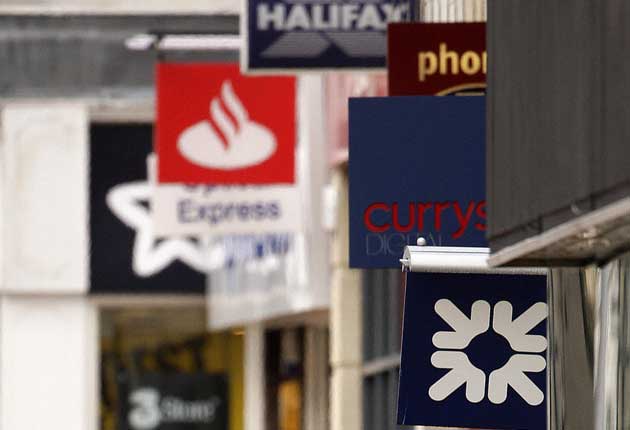Britain's banks pass the European stress tests

Your support helps us to tell the story
From reproductive rights to climate change to Big Tech, The Independent is on the ground when the story is developing. Whether it's investigating the financials of Elon Musk's pro-Trump PAC or producing our latest documentary, 'The A Word', which shines a light on the American women fighting for reproductive rights, we know how important it is to parse out the facts from the messaging.
At such a critical moment in US history, we need reporters on the ground. Your donation allows us to keep sending journalists to speak to both sides of the story.
The Independent is trusted by Americans across the entire political spectrum. And unlike many other quality news outlets, we choose not to lock Americans out of our reporting and analysis with paywalls. We believe quality journalism should be available to everyone, paid for by those who can afford it.
Your support makes all the difference.Britain's banks passed long-awaited European Union stress tests yesterday but Royal Bank of Scotland appeared to come close to being placed on a danger list for those that scraped through.
RBS was the weakest British bank under the distressed scenarios, while the strongest was HSBC.
Banks had to show that in an economic meltdown their core capital buffer to guard against losses would be at least 5 per cent of their risk-weighted assets.
RBS's core tier one capital ratio under the European Banking Authority's scenarios was predicted at 6.3 per cent and HSBC's was 8.5 per cent. Barclays was forecast to have a figure of 7.3 per cent with Lloyds Banking Group coming in at 7.7 per cent.
Under the adverse scenario, RBS would post a net loss of £9.02bn this year and HSBC's forecast profit would be cut to £2.96bn from £11.93bn. Barclays' profit would be cut to £1.2bn from a projected £4.27bn and Lloyds' would post an £8.1bn loss.
Though the pass mark was 5 per cent, banks with less than 6 per cent were put on a watch list – a fate RBS escaped by 0.4 of a percentage point. Another condition for being placed on the watch list was having large exposures to debts of countries under stress. It was not clear whether that standard applied to RBS.
RBS said the tests could help restore confidence in the European banking sector but it criticised the EBA's models.
"The prescriptive methodology of EBA stress testing delivers outcomes that are not fully consistent with internal results and may not reflect business changes for groups in transition such as RBS." Flaws include assuming average profits from trading activities in the last five years which racked up big losses but which have now been pared back, the bank said.
The tests assumed a 0.5 per cent economic contraction in the eurozone this year, a 15 per cent drop in the Continent's equity markets, and trading losses on sovereign debt not held in the long-term "banking book".
Britain's banks took one of the biggest hits to current capital levels under the stress tests with a 25 per cent ratio reduction. Only Greece, with a 40 per cent fall, was worse affected.
Join our commenting forum
Join thought-provoking conversations, follow other Independent readers and see their replies
Comments